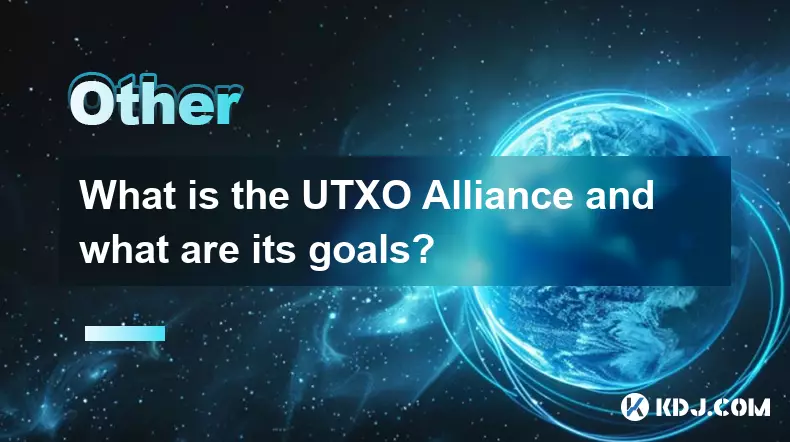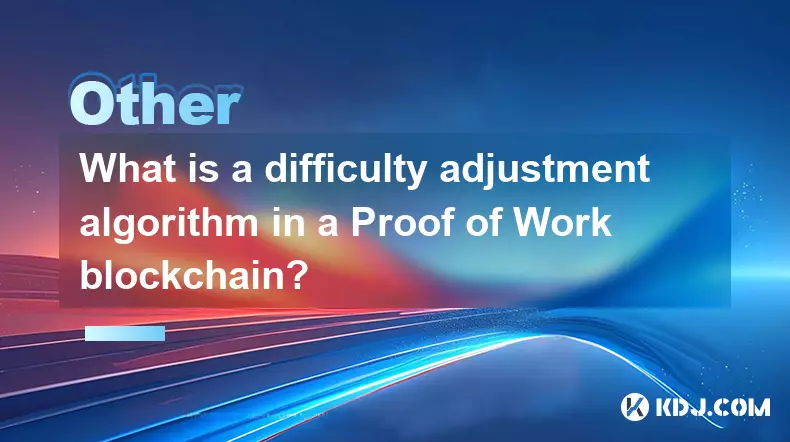-
 bitcoin
bitcoin $101752.865364 USD
-1.09% -
 ethereum
ethereum $3382.985899 USD
-1.38% -
 tether
tether $0.999658 USD
0.04% -
 xrp
xrp $2.272505 USD
-1.51% -
 bnb
bnb $989.089004 USD
0.14% -
 solana
solana $156.962612 USD
-3.08% -
 usd-coin
usd-coin $0.999776 USD
0.01% -
 tron
tron $0.290786 USD
-0.69% -
 dogecoin
dogecoin $0.174594 USD
-2.86% -
 cardano
cardano $0.560085 USD
-3.55% -
 hyperliquid
hyperliquid $40.023704 USD
-5.75% -
 chainlink
chainlink $15.324649 USD
-2.78% -
 bitcoin-cash
bitcoin-cash $493.576540 USD
-3.52% -
 zcash
zcash $571.320038 USD
-12.05% -
 stellar
stellar $0.280066 USD
-4.26%
What is account abstraction (ERC-4337) and how does it enable smarter wallets?
ERC-4337 enables smarter Ethereum wallets with features like gasless transactions, social recovery, and batched operations, improving usability and security.
Nov 09, 2025 at 09:20 am

Understanding Account Abstraction and Its Role in Ethereum
1. Account abstraction, formalized through ERC-4337, redefines how user accounts interact with the Ethereum blockchain by decoupling transaction logic from the wallet’s validation mechanism. Instead of relying solely on private key signatures, users can define custom rules for authorizing transactions using smart contracts.
2. Traditional externally owned accounts (EOAs) require cryptographic signatures to initiate transactions. With account abstraction, wallets become programmable entities—smart contract accounts—that can execute complex operations before approving a transfer or interaction.
3. This shift enables features such as social recovery, where trusted contacts can help regain access to a locked wallet. It also allows conditional transactions based on time, multi-party approvals, or off-chain data verification without altering the underlying consensus layer.
4. ERC-4337 achieves this without requiring changes to Ethereum’s core protocol by introducing a mempool-like construct called the “UserOperation” pool. These operations are bundled and executed by specialized actors known as bundlers, who validate compliance before inclusion in blocks.
5. The standard maintains backward compatibility while paving the way for advanced wallet architectures. Users retain control over their assets while gaining flexibility in defining security policies, spending limits, and automation routines directly within their wallet logic.
How Smarter Wallets Benefit from ERC-4337
1. Smart contract wallets powered by account abstraction support batched transactions, allowing multiple actions—such as token swaps, NFT purchases, and staking—to be executed atomically in one step. This reduces friction and gas inefficiencies associated with sequential interactions.
2. Wallets can now pay gas fees in tokens other than ETH, removing a major usability barrier. A dApp or service provider may sponsor transaction costs, enabling seamless onboarding for new users who don’t hold native Ether.
3. Programmable security models allow dynamic authentication methods. For example, a wallet might require biometric verification via a mobile app, combined with an email challenge for high-value transfers, all enforced through code rather than external tools.
4. Session keys can grant temporary permissions to decentralized applications, limiting exposure compared to full approval of asset access. These sessions expire automatically or can be revoked, enhancing protection against malicious behavior.
5. Integration with decentralized identity systems becomes more natural, as wallets can verify credentials or reputation scores before executing certain functions. This supports use cases like gated communities, credit scoring in DeFi, or compliance-aware transactions.
Security and Adoption Implications of ERC-4337
1. While increased flexibility improves user experience, it introduces new attack vectors. Poorly designed wallet contracts could expose funds to logic flaws or unauthorized upgrades if ownership controls are misconfigured.
2. The reliance on bundlers and paymasters demands trust assumptions that differ from traditional EOAs. Although these roles are intended to be decentralized, early adoption may concentrate power among a few operators, creating potential bottlenecks or censorship risks.
3. Auditing complexity rises significantly, as wallet behavior depends on both internal logic and interactions with auxiliary contracts like factories, aggregators, and signature validators. Standardization efforts aim to mitigate fragmentation but remain ongoing.
4. Major wallet providers and infrastructure projects have begun integrating ERC-4337-compatible solutions. Platforms like Argent, Safe, and Biconomy offer early implementations, demonstrating real-world viability across gaming, DeFi, and cross-chain applications.
5. User education remains critical. Understanding the difference between EOA and smart account behaviors—especially around recovery mechanisms, upgradeability, and fee delegation—is essential for safe adoption in a broader ecosystem.
Frequently Asked Questions
What makes ERC-4337 different from previous smart wallet attempts?ERC-4337 operates at the application layer without consensus changes, making it deployable today. Earlier proposals required hard forks to modify transaction validation rules, which faced resistance due to coordination overhead and network stability concerns.
Can I convert my existing MetaMask wallet to an ERC-4337 wallet?Not directly. MetaMask primarily functions as an EOA-based interface. To use account abstraction, you need a compatible smart contract wallet—either through supported interfaces like Safe{Wallet} or dedicated apps built on ERC-4337 tooling such as Alchemy or Stackup.
Who pays for the additional computation in abstracted accounts?Gas costs scale with complexity, so advanced features require higher fees. However, paymasters can subsidize these costs, and bundlers optimize execution efficiency. End users may not notice price differences when services absorb expenses for better UX.
Are ERC-4337 wallets vulnerable to phishing attacks?They face similar social engineering risks as traditional wallets. However, enhanced authentication layers and permissioned sessions reduce the impact of stolen credentials. Persistent session keys do not grant full control, unlike exposed private keys.
Disclaimer:info@kdj.com
The information provided is not trading advice. kdj.com does not assume any responsibility for any investments made based on the information provided in this article. Cryptocurrencies are highly volatile and it is highly recommended that you invest with caution after thorough research!
If you believe that the content used on this website infringes your copyright, please contact us immediately (info@kdj.com) and we will delete it promptly.
- Ripple (XRP) in 2026: Hold or Fold? A Look at XRP's Future and Emerging DeFi Alternatives
- 2025-11-08 18:35:01
- Zcash ZEC Coin Price Explosion: From Privacy Niche to Center Stage
- 2025-11-08 18:55:01
- Berachain Price Prediction: Navigating the Honeycomb Hype in Crypto
- 2025-11-08 18:55:01
- Arthur Hayes, Gold, and Bitcoin: A Modern Monetary Trinity?
- 2025-11-08 19:15:01
- Shiba Inu's Next Move: Navigating a Shifting Market
- 2025-11-08 19:20:01
- Pakistan's Crypto Crossroads: Balancing Opportunity with Asset-Backed Realities
- 2025-11-08 19:20:01
Related knowledge

What are intents in crypto and how do they change user interaction?
Nov 09,2025 at 09:00am
Understanding the Role of Decentralized Exchanges in Modern Crypto Trading1. Decentralized exchanges, commonly known as DEXs, have reshaped how trader...

What is a cryptographic nonce and how is it used to prevent replay attacks?
Nov 08,2025 at 05:00pm
Understanding Cryptographic Nonces in Blockchain Systems1. A cryptographic nonce is a number used only once within a specific cryptographic communicat...

What are the trade-offs between liveness and safety in a consensus protocol?
Nov 09,2025 at 12:20pm
Understanding the Role of Liquidity Pools in Decentralized Finance1. Liquidity pools are foundational components within decentralized exchanges (DEXs)...

What is a call data in an Ethereum transaction and how is it used?
Nov 09,2025 at 01:59am
Understanding Call Data in Ethereum Transactions1. Call data refers to the information sent along with a transaction on the Ethereum network that spec...

What is the UTXO Alliance and what are its goals?
Nov 09,2025 at 01:39pm
Understanding the UTXO Alliance1. The UTXO Alliance is a collaborative initiative formed by prominent blockchain projects and developers who support t...

What is a difficulty adjustment algorithm in a Proof of Work blockchain?
Nov 09,2025 at 08:20am
Understanding the Role of Difficulty Adjustment in Proof of Work1. A difficulty adjustment algorithm is a core mechanism in Proof of Work (PoW) blockc...

What are intents in crypto and how do they change user interaction?
Nov 09,2025 at 09:00am
Understanding the Role of Decentralized Exchanges in Modern Crypto Trading1. Decentralized exchanges, commonly known as DEXs, have reshaped how trader...

What is a cryptographic nonce and how is it used to prevent replay attacks?
Nov 08,2025 at 05:00pm
Understanding Cryptographic Nonces in Blockchain Systems1. A cryptographic nonce is a number used only once within a specific cryptographic communicat...

What are the trade-offs between liveness and safety in a consensus protocol?
Nov 09,2025 at 12:20pm
Understanding the Role of Liquidity Pools in Decentralized Finance1. Liquidity pools are foundational components within decentralized exchanges (DEXs)...

What is a call data in an Ethereum transaction and how is it used?
Nov 09,2025 at 01:59am
Understanding Call Data in Ethereum Transactions1. Call data refers to the information sent along with a transaction on the Ethereum network that spec...

What is the UTXO Alliance and what are its goals?
Nov 09,2025 at 01:39pm
Understanding the UTXO Alliance1. The UTXO Alliance is a collaborative initiative formed by prominent blockchain projects and developers who support t...

What is a difficulty adjustment algorithm in a Proof of Work blockchain?
Nov 09,2025 at 08:20am
Understanding the Role of Difficulty Adjustment in Proof of Work1. A difficulty adjustment algorithm is a core mechanism in Proof of Work (PoW) blockc...
See all articles





















![The Graph Price Prediction [GRT Crypto Price News Today] The Graph Price Prediction [GRT Crypto Price News Today]](/uploads/2025/11/07/cryptocurrencies-news/videos/690d4df44fe69_image_500_375.webp)



















































